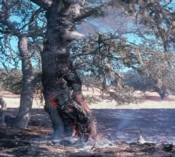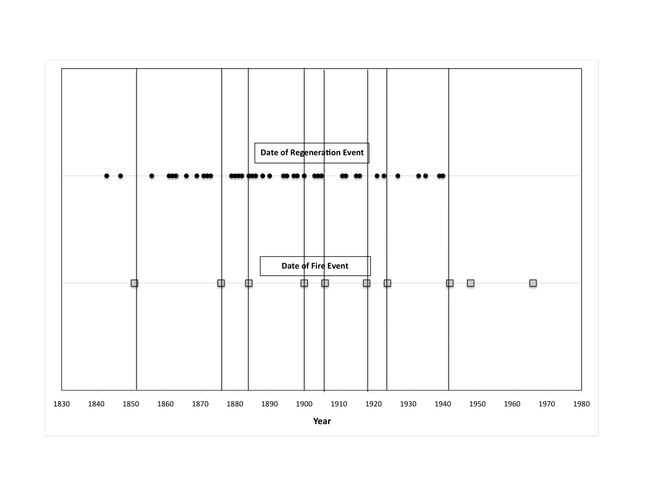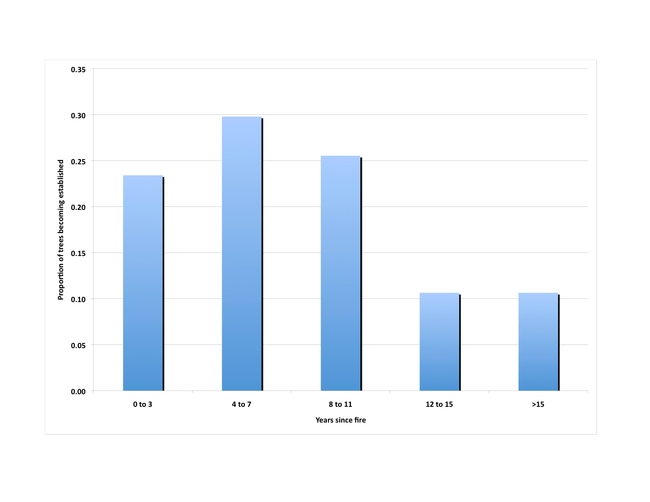
Fire is an important part of blue oak ecosystems (See: Fire in California's Oak Woodlands). Although we recognize that fire suppression on oak woodlands has increased the fire return interval, there are only a limited number of studies documenting pre-suppression fire frequency (see McClaren and Bartolome, 1989; Mensing 1992).
As part of a long-term blue oak thinning study in the Southern Sierra (see “Thinning Enhance Blue Oak and Interior Live Oak Acorn Production”), 49 trees were felled. Each tree was aged, and fire scars were dated. Fire scars were identified on 8 of the sample trees (16 percent of the population), allowing us to determine fire history in the stand from 1850 to the present.
Results and Conclusions:
Figure 1 below shows the dates of the 10 fire events that occurred between 1851 and 1996 on the study site in Tulare County near California Hot Springs. The mean fire return interval was 12.8 years (+/- 2.3 years), with a range from 6 to 25 years. There were no fires on the site since 1966.
Based on the age structure of the sample trees on this study site, less than 25 percent of the trees became established from 0 to 3 years after the fire, and another 55 percent were established 4 to 11 years after fire (Figure 2). These results show that the date of fire was much less important than the McClaran and Bartolome (1989) and Mensing (1992) studies, where most of the trees were established immediately following fire events.
Fire suppression has changed the the pattern of fire in blue oak stands. Fire, from both prescribed burns and from natural sources, is much less common in blue oak stands today. This results in large fuel build-ups, higher stand density and crown cover, and different stand structures. Instead of relatively frequent, low intensity fires, we now anticipate infrequent, high intensity fires. Strategies to re-introduce fire, or to achieve restoration of fire-resilient stand structures, is appropriate as part of a long-term sustainability strategy for blue oak woodlands.
Literature:
McClaren, M.P. and J.W. Bartolome. 1989. Fire-related recruitment in stagnant Quercus douglasii populations. Can. Journal of Forest Research 19:580-585.
McCreary, D.D. 2004. Fire in California’s oak woodlands. UC ANR on-line publication. 8 pp. http://ucanr.org/sites/oak_range/files/59574.pdf
Mensing, S. A. 1992. The impact of European settlement on blue oak (Quercus douglasii) regeneration and recruitment in the Tehachapi Mountains, California. Madrono 39(1):36-46.
Attached Images:

Figure 1. Fire interval in Tulare County blue oak

Figure 2. Proportion of trees becoming established after fire